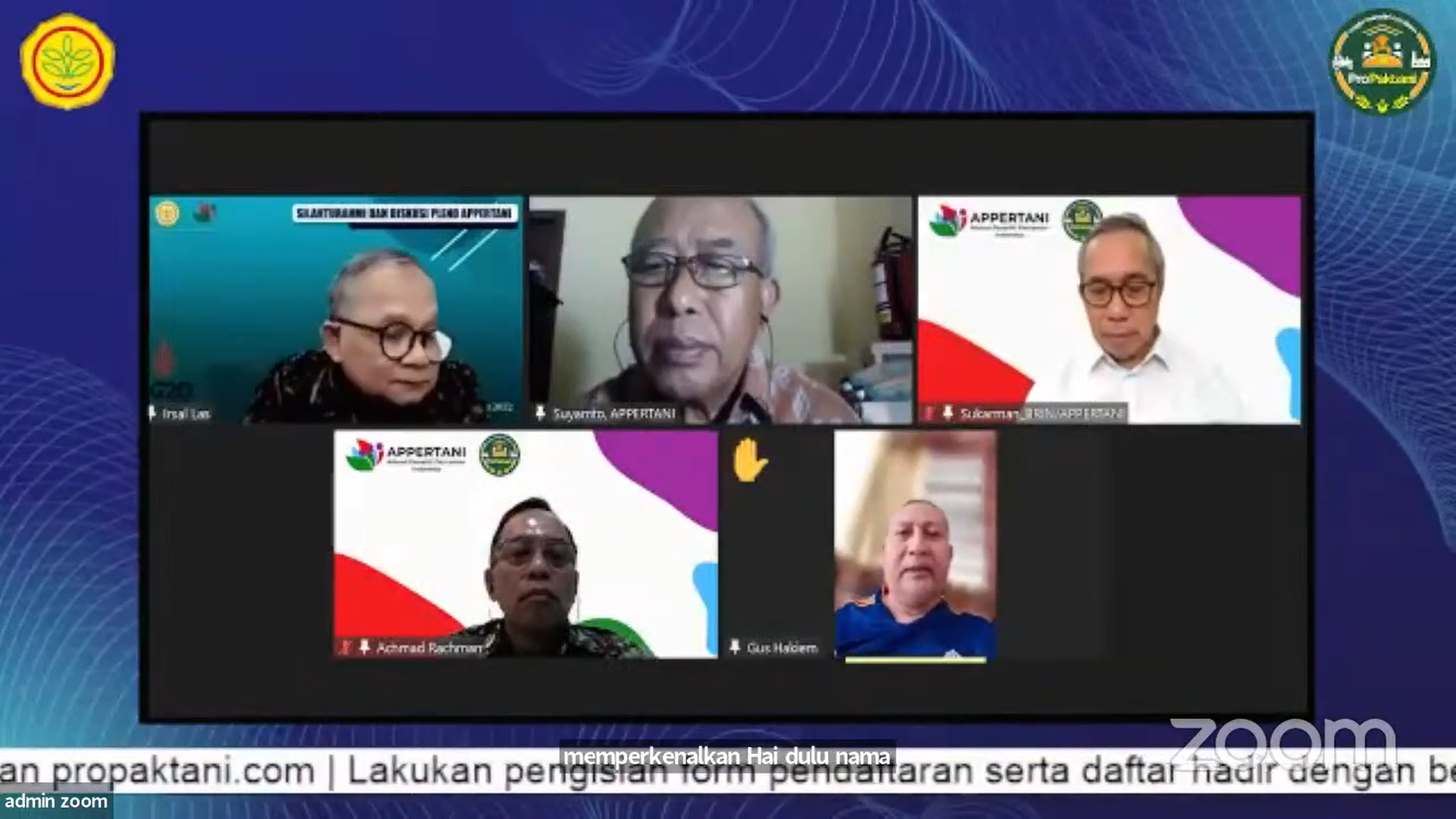Online Socialization and Technical Guidance (WEBINAR) #EPISODE 1085 PROPAKTANI

Optimizing Dryland Potential
Indonesia’s domestic food production must continue to be increased in quantity and quality to achieve food independence, in line with the increase in population which in 2024 has reached 281 million people with low consumption diversity. Propaktani episode 1085 organized by APPERTANI is one of the efforts to increase domestic food production by optimizing the potential of dry land. Dr. Suwandi, Director General of Food Crops in his keynote speech explained that dry land with the potential of one-third of Indonesia’s territory needs to be met with water needs, cultivation technology and mechanization so that productivity increases. The moderator of this webinar episode is Prof. Dr. Ir. Irsal Las, MS, Chairman, and expert of APPERTANI in the Field of Agroclimate, Land Resources Policy and the Environment.
Prof. Dr. Ir. Sukarman, MS., BRIN Researcher who is also the APPERTANI Soil Science Expert Team delivered the topic: “Dry Land: Its Characteristics and Potential for Food Crop Development”. Increasing food production requires land expansion, one of which can be used is dry land. Dry land is a stretch of land that is never inundated, or not inundated at most times of the year or all the time. The area of dry land outside settlements/cities, water bodies reach 144.5 million ha of lowland, highlands, wet climate, dry climate, acidic and non-acidic soil. The potential of dry land for food crop agriculture, highland vegetable crops, annual crops and livestock grazing reaches the largest area of 99.7 million ha in Kalimantan, Sumatra, and Papua with an area of more than 10 million ha. The suitability of dry land for the development of nine strategic food crop commodities has been mapped with a scale of 1:50,000. Land suitability evaluation has succeeded in making the land suitability class of the class very suitable (S1), quite appropriate (S2, marginal appropriate (S3) and not suitable (N) for certain commodities.
Prof. Dr. Ir. Suyamto, APPERTANI Expert Team in Plant Cultivation, delivered material with the topic: “Integrated Management Strategy of Dry Land Supports Increased Crop Production”. The conversion of wet/fertile land functions continues at all times estimated at 100 thousand ha annually. The use of dry land is very strategic and should be viewed as an important government effort in expanding land and equitable distribution of agricultural development. Technical dryland management and policy operations must be based on characteristics and dryland problems. Integrated dryland management includes: (1) Efficient/optimal water procurement and/or utilization; (2) Conservative tillage; (3) Planting plant types and varieties efficient use of water; (4) Integrated and conservative cropping system; (5) Organic and inorganic fertilization according to plant needs; (6) Integrated Pest Control (IPM) and (7) the need for government support/policy as an integral component of other management technologies.
Dr. Achmad Rachman, M.Sc., APPERTANI Agricultural Land Resources Expert Team and Organic Agriculture Assessor delivered the topic: “Conservation technology and innovation to realize sustainable dryland agriculture”. Dry land has great potential for the fulfillment of production to achieve food independence in accordance with the mandate of Law No. 18 of 2012 concerning food, if done by heeding aspects of land conservation. Conservation agriculture is a sustainable land management system that can improve soil quality while increasing crop productivity, storing carbon in the soil, and reducing greenhouse gas emissions. The main components are: (1) Minimum tillage; (2) Return of crop residues to the field as mulch; (3) Plant rotation and (4) Integrated nutrient management. The integration of these four components is to transform the no-tillage system into a conservation agriculture model.


